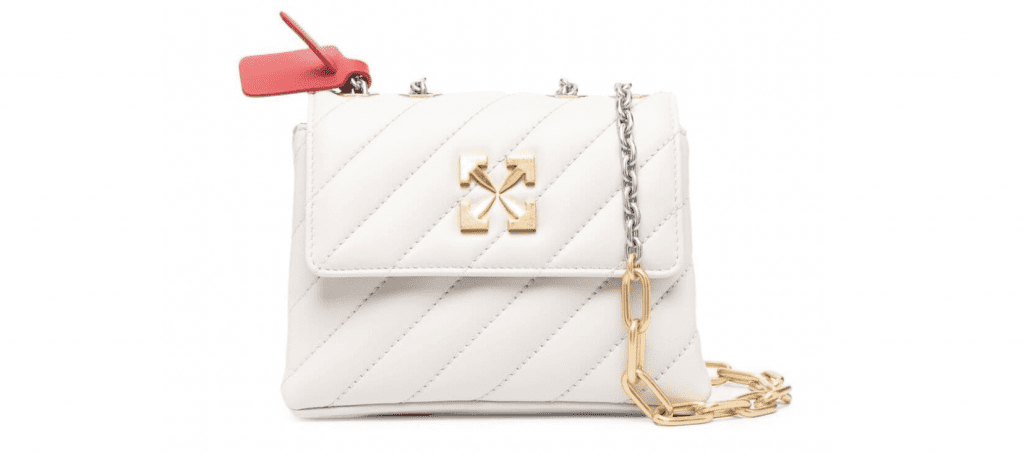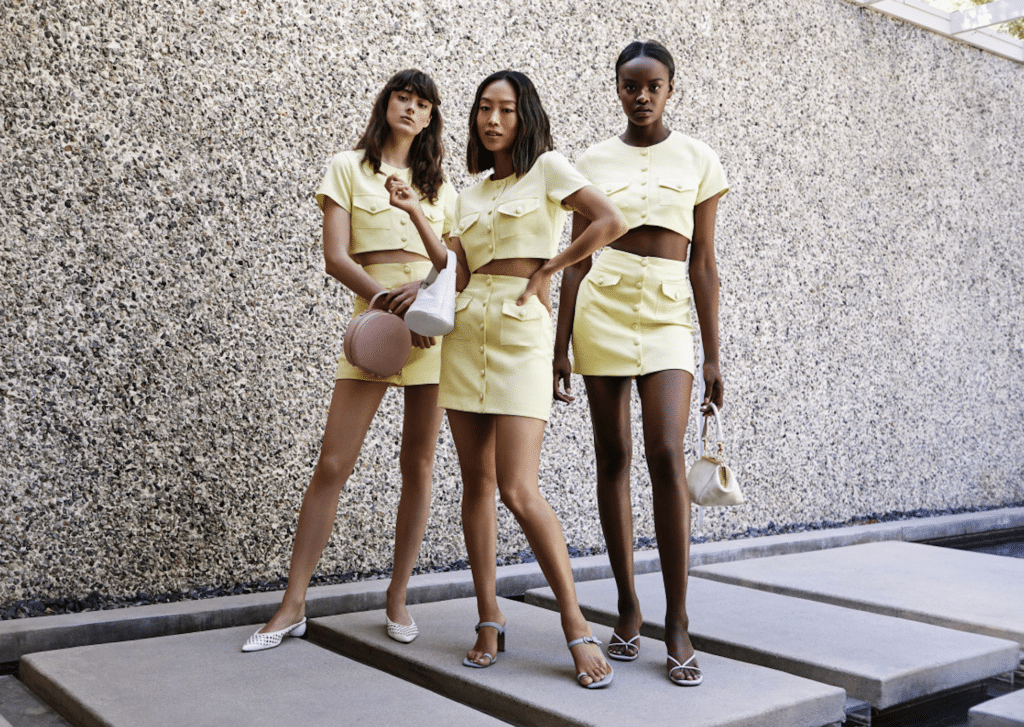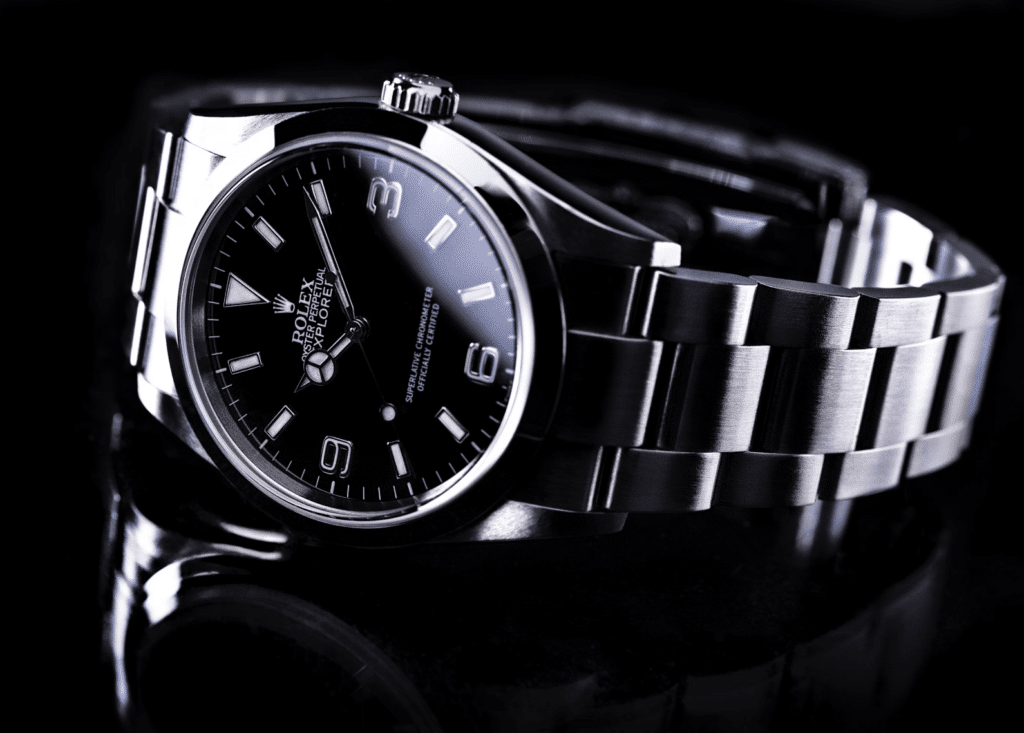Off-White is still in the midst of fighting for registrations for two of its many trademarks. At issue: the red zip tie that is commonly attached to the brand’s footwear and handbag offerings, and the “For Walking” word mark – quotation marks, included – which has appeared on some of the brand’s shoes, including a pair of boots that it sent down the runway in Paris several years ago. Counsel for the heavily-hyped fashion brand filed responses challenging the latest round of pushback from the U.S. Patent and Trademark Office (“USPTO”) early this month, arguing that both the red zip tie and the “For Walking” marks do, in fact, serve to the identify products they appear on as coming from the Virgil Abloh-owned brand, and thus, should be registered with the trademark body.
First addressing the red zip tie mark, which the USPTO previously rejected on the basis that it is “merely a decorative or ornamental feature of the goods” and that “consumers are induced to buy the goods” that it is attached to precisely “because of this decorative feature,” Off-White’s attorneys claim that the “unique and unusual” zip tie creates “the commercial impression of a trademark” and “serves as a strong source identifier.” Specifically, they claim that Off-White’s “extensive use and promotion of [the zip tie] for more than five years” – and the widespread media attention and celebrity endorsements that have come with it – “has allowed consumers to directly associate [the zip tie] with [the Off-White brand] as the source of [Off-White’s] goods.”
Beyond that, Off-White takes issue with the USPTO examiner’s claim that the zip tie does not function as a trademark because it is an unprotectable decorative feature of the Off-White’s products that drives consumers to purchase those products. Disagreeing with the examiner’s assertion that “if consumers are purchasing a product because of the presence of [Off-White’s] mark [on that product], that makes it a decorative feature,” Off-White likens the zip tie to the logo-centric products of luxury goods brands, sales of which are driven, in large part, by the presence of the logos.

The zip tie “is no different,” the brand’s counsel claims, than “any other trademark that appears affixed to fashion products,” which often attract consumers to the product while also identifying the source of it. This is especially true for high-end fashion products “for which the communication to others that the product is produced by a certain source is much of the attraction of purchasing, owning, and wearing the product in the first place,” they assert.
In other words, consumers very well may buy a bag or belt or pair of shoes because of the trademark(s) that appear on those goods (and in fact, as I have argued at length in the past, they probably do buy them for that very reason). That does not, however, necessarily mean that the logos or brand names or patterns, etc. do not act as indicators of source of the goods; after all, a mark can be both decorative and source-indicating at the same time. In fact, counsel for Off-White argues that when consumers are attracted to – and ultimately purchase – a product because of the trademark(s) that appear on it, this is almost certainly because of the “specific source-identifying properties of” those marks.
The brand’s counsel also asserts that “the mere fact that a trademark can be seen on the product cannot automatically mean that it is a decorative or ornamental feature of the goods.” With that in mind, and given Off-White’s “substantially exclusive and continuous use” of the red zip tie as a trademark for at least five years, the brand contends that the USPTO should withdraw its refusal and enable the application to proceed.
“For Walking”
In a separate response, counsel for Off-White focuses its attention on the USPTO’s preliminary refusal to register “For Walking” because the mark is “descriptive of the applied-for goods” – i.e., footwear, which is used … for walking. Again, disagreeing with the USPTO’s determination, counsel for Off-White asserts that the “For Walking” mark is “elevated beyond being descriptive due to the unique commercial impression created by [Off-White’s] distinct use of quotation marks,” which Off-White claims is different from “mere use of the word or phrase without the quotation marks.”
Echoing an argument made in an earlier response to USPTO pushback, Off-White asserts that the inclusion of the quotation marks in the mark changes “the very essence of the phrase [For Walking] by altering the way it is pronounced, what it is perceived to mean, and how it is understood by consumers.” The quotation marks “add a layer of meaning to the phrase,” the brand’s counsel contends, claiming that “the overall effect of the quotation marks in [Off-White’s] mark is to transform the words used and create a unique, source-identifying commercial impression in the minds of consumers.”
And still yet, Off-White argues that because the mark at issue “does not immediately describe a characteristic or feature of” the products upon which it appears “with any degree of particularity,” the mark is not descriptive, and thus, should be permitted to proceed in the registration process.
The back and forth between Off-White and the USPTO is not limited to these two marks. On the contrary; Off-White has also been lobbying for the registration for an array of other marks, including the quotation flanked “Product Bag,” which the trademark body issued a notice of allowance for in December.
The routinely-filed applications for registration – paired with the consistent anti-counterfeiting and infringement lawsuits, and the growing number of trademark oppositions being waged by Off-White – come as Abloh continues to build out (and monopolize) a vocabulary of assets to cater to his core consumer base of “hype beasts and the star-obsessed” for whom Vanity Fair’s K. Austin Collins says, “diagonal stripes and ironic quotation marks” are not terribly unlike “what interlocking L.V. monograms are to another generation.” As for whether the USPTO sees the similarity between the two, that is still yet to be determined.














